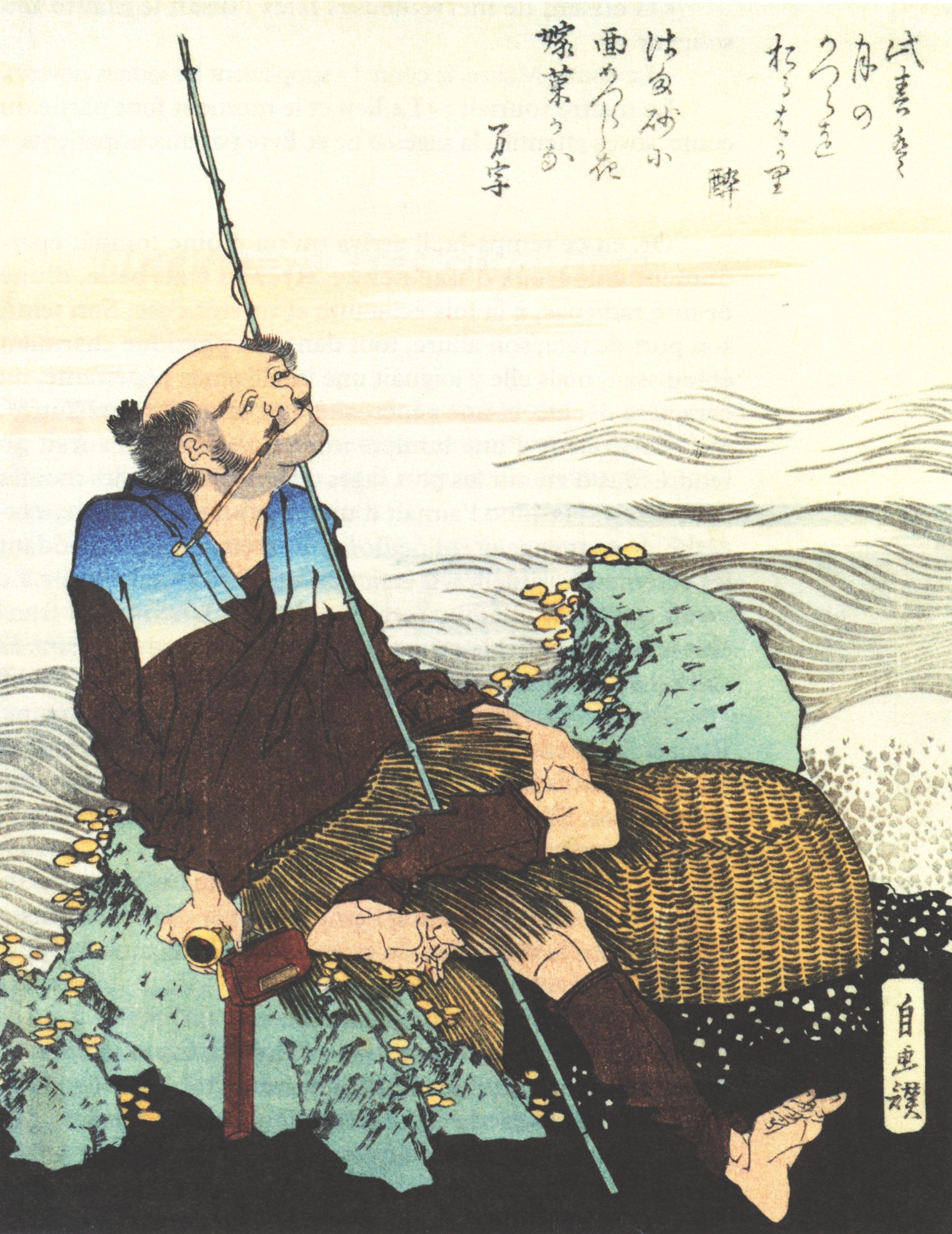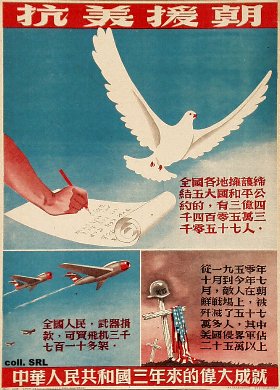|
New Year Picture
A New Year picture () is a popular Banhua in China. It is a form of colored woodblock print, used for decoration and the performance of rituals during the Chinese New Year Holiday. In the 19th and 20th centuries some printers began to use the genre to depict current events. Background The origins of the "New Year picture" are unknown, although the genre is thought to have begun with the printing of door gods during the Tang dynasty. By the 19th century door gods were joined by other household protective and auspicious deities including the Kitchen God, and the God of Wealth. Images of women and babies were common, as were depictions of New Year observances, popular narratives, and depictions of the theater. Customarily, as each Chinese New Year arrives, every family replaces its New Year picture in order to "say goodbye to the Past and welcome the Future" (Chinese: 辞 旧 迎 新). In the late-19th and early 20th century woodblock printers began to supplement traditional re ... [...More Info...] [...Related Items...] OR: [Wikipedia] [Google] [Baidu] |
Yangliuqing
Yangliuqing Town () is a market town in Xiqing District, in the western suburbs of Tianjin, People's Republic of China. Despite its relatively small size, it has been named since 2006 in the "famous historical and cultural market towns in China". It is best known in China for creating nianhua or Yangliuqing nianhua. For more than 400 years, Yangliuqing has in effect specialised in the creation of these woodcuts for the New Year. wood block prints using vivid colourschemes to portray traditional scenes of children's games often interwoven with auspiciouse objects. , it had a total population of 118,291. Geography Yangliuqing Town is located at the northwestern corner of Xiqing District. It borders Shangkou and Qingguang Towns in the north, Xiyingmen Subdistrict and Zhongbei Town in the east, Zhangjiawo and Xinkou Towns in the south, and Wangqingtuo Town in the west. Ziya and Zhongqing Rivers flows through the middle of the town. National Highway 112 and 104 both passes t ... [...More Info...] [...Related Items...] OR: [Wikipedia] [Google] [Baidu] |
Surimono
are a genre of Japanese woodblock print. They were privately commissioned for special occasions such as the New Year. Surimono literally means "printed thing". Being produced in small numbers for a mostly educated audience of ''literati'', surimono were often more experimental in subject matter and treatment, and extravagant in printing technique, than commercial prints. They were most popular from the 1790s to the 1830s, and many leading artists produced them. One of the most famous woodblock artists who got his start from producing surimono was Suzuki Harunobu, credited with being the genius behind the later introduction (in the 1760s) of Nishiki-e ("brocade prints"). Use In most cases, surimono were commissioned by poetry societies to illustrate the winning poem in a poetry contest judged by the master of the society. Such prints generally had a small format, often c. 205 × 185 mm, and the relief carving of the Kanji characters took a great deal of technical skill. K ... [...More Info...] [...Related Items...] OR: [Wikipedia] [Google] [Baidu] |
Mianzhu
Mianzhu ( zh, s=绵竹, t=綿竹, w=Mienchu, p=Miánzhú) is a county-level city of Deyang, Sichuan province in Southwest China. It has an area of and a population of 439,958 in 2020 census. Administrative divisions Mianzhu has 2 subdistricts and 10 towns under its jurisdiction: ;subdistricts: *Jiannan () *Ziyan () ;towns: *Jiulong () *Hanwang () *Lutang () *Guangji () *Yuquan () *Xinshi () *Xiaode () *Fuxin () *Shidi () *Qingping () Climate Economic Mianzhu is a symbolic place presenting the south-west cities which produce special products, such as the peal from Jiulong Mountain, a branch of Longmen Mountain. One of the most well-known wines around the country, even the world, is Jian Nan Chun, a kind of traditional Chinese spirit with a history of 500 years. The quote of this company is "what you drink today is what was the Tang Dynasty Palace spirit". The value of JNC’s products was at least above three million RMB each year. After 2008, in which year the Wenchuan ear ... [...More Info...] [...Related Items...] OR: [Wikipedia] [Google] [Baidu] |
Cultural Revolution
The Cultural Revolution, formally known as the Great Proletarian Cultural Revolution, was a Social movement, sociopolitical movement in the China, People's Republic of China (PRC). It was launched by Mao Zedong in 1966 and lasted until his death in 1976. Its stated goal was to preserve Ideology of the Chinese Communist Party, Chinese socialism by purging remnants of Capitalism, capitalist and Four Olds, traditional elements from Chinese culture, Chinese society. In May 1966, with the help of the Cultural Revolution Group, Mao launched the Revolution and said that Bourgeoisie, bourgeois elements had infiltrated the government and society with the aim of restoring capitalism. Mao called on young people to Bombard the Headquarters, bombard the headquarters, and proclaimed that "to rebel is justified". Mass upheaval began in Beijing with Red August in 1966. Many young people, mainly students, responded by forming Cadre system of the Chinese Communist Party, cadres of Red Guards th ... [...More Info...] [...Related Items...] OR: [Wikipedia] [Google] [Baidu] |
Propaganda In China
Propaganda in China is used by the ruling Chinese Communist Party (CCP), and historically by the Kuomintang (KMT), to sway domestic and international opinion in favor of its policies. In the People's Republic of China (PRC), this includes censorship of proscribed views and an active promotion of views that favor the government. Propaganda is considered central to the operation of the CCP and the government of the People's Republic of China, with propaganda operations in the country being directed by the CCP's Central Propaganda Department. Aspects of propaganda can be traced back to the earliest periods of Chinese history, but propaganda has been most effective in the twentieth and twenty-first centuries owing to mass media and an authoritarian government. Propaganda was an important tool in legitimizing the Nationalist government, which retreated to Taiwan in 1949. Propaganda during the Mao era was known for its constant use of mass campaigns to legitimize the party and the ... [...More Info...] [...Related Items...] OR: [Wikipedia] [Google] [Baidu] |
Chinese Communist Party
The Communist Party of China (CPC), also translated into English as Chinese Communist Party (CCP), is the founding and One-party state, sole ruling party of the People's Republic of China (PRC). Founded in 1921, the CCP emerged victorious in the Chinese Civil War against the Kuomintang and Proclamation of the People's Republic of China, proclaimed the establishment of the PRC under the leadership of Mao Zedong in October 1949. Since then, the CCP has governed China and has had sole control over the People's Liberation Army (PLA). , the CCP has more than 99 million members, making it the List of largest political parties, second largest political party by membership in the world. In 1921, Chen Duxiu and Li Dazhao led the founding of the CCP with the help of the Far Eastern Bureau of the Communist Party of the Soviet Union, Russian Communist Party (Bolsheviks) and Far Eastern Bureau of the Communist International. Although the CCP aligned with the Kuomintang (KMT) during its initia ... [...More Info...] [...Related Items...] OR: [Wikipedia] [Google] [Baidu] |
Second Sino-Japanese War
The Second Sino-Japanese War was fought between the Republic of China (1912–1949), Republic of China and the Empire of Japan between 1937 and 1945, following a period of war localized to Manchuria that started in 1931. It is considered part of World War II, and often regarded as the beginning of World WarII in Asia. It was the largest Asian war in the 20th century and has been described as The Asian Holocaust, in reference to the scale of Japanese war crimes against Chinese civilians. It is known in China as the War of Resistance against Japanese Aggression. On 18 September 1931, the Japanese staged the Mukden incident, a false flag event fabricated to justify their Japanese invasion of Manchuria, invasion of Manchuria and establishment of the puppet state of Manchukuo. This is sometimes marked as the beginning of the war. From 1931 to 1937, China and Japan engaged in skirmishes, including January 28 incident, in Shanghai and in Northern China. Chinese Nationalist and C ... [...More Info...] [...Related Items...] OR: [Wikipedia] [Google] [Baidu] |
Weifang
Weifang ( zh, s=潍坊, t=濰坊, p=Wéifāng) is a prefecture-level city in central Shandong province, People's Republic of China. The city borders Dongying to the northwest, Zibo to the west, Linyi to the southwest, Rizhao to the south, Qingdao to the east, and looks out to the Laizhou Bay to the north. Its population was 9,386,705 at the 2020 census, of whom 3,095,520 lived in the built-up (''or metro'') area made up of four urban districts (''Kuiwen, Weicheng, Hanting and Fangzi'') and Changle County. Weifang has numerous natural and historic sites, such as Shihu Garden (from the Late Ming and early Qing dynasty), Fangong Pavilion (from the Song dynasty), fossil sites (including dinosaur fossils, in Shanwang, Linqu), Mount Yi National Forest Park, Mount Qingyun and the Old Dragon Spring. Painted New Year woodcuts from Yangjiabu are also well-known. The city is served by Weifang Airport to various cities across China. Administration The prefecture-level city of Weifang adminis ... [...More Info...] [...Related Items...] OR: [Wikipedia] [Google] [Baidu] |
Ming Dynasty
The Ming dynasty, officially the Great Ming, was an Dynasties of China, imperial dynasty of China that ruled from 1368 to 1644, following the collapse of the Mongol Empire, Mongol-led Yuan dynasty. The Ming was the last imperial dynasty of China ruled by the Han people, the majority ethnic group in China. Although the primary capital of Beijing fell in 1644 to a rebellion led by Li Zicheng (who established the short-lived Shun dynasty), numerous rump state, rump regimes ruled by remnants of the House of Zhu, Ming imperial family, collectively called the Southern Ming, survived until 1662. The Ming dynasty's founder, the Hongwu Emperor (1368–1398), attempted to create a society of self-sufficient rural communities ordered in a rigid, immobile system that would guarantee and support a permanent class of soldiers for his dynasty: the empire's standing army exceeded one million troops and the naval history of China, navy's dockyards in Nanjing were the largest in the world. H ... [...More Info...] [...Related Items...] OR: [Wikipedia] [Google] [Baidu] |
Boxer Rebellion
The Boxer Rebellion, also known as the Boxer Uprising, was an anti-foreign, anti-imperialist, and anti-Christian uprising in North China between 1899 and 1901, towards the end of the Qing dynasty, by the Society of Righteous and Harmonious Fists, known as the "Boxers" in English due to many of its members having practised Chinese martial arts, which at the time were referred to as "Chinese boxing". It was defeated by the Eight-Nation Alliance of foreign powers. Following the First Sino-Japanese War, villagers in North China feared the expansion of foreign Spheres of influence#China, spheres of influence and resented the extension of privileges to Christian missionaries, who used them to shield their followers. In 1898, North China experienced several natural disasters, including the Yellow River flooding and droughts, which Boxers blamed on foreign and Christian influence. Beginning in 1899, the movement spread across Shandong and the North China Plain, destroying foreign pro ... [...More Info...] [...Related Items...] OR: [Wikipedia] [Google] [Baidu] |
1900
As of March 1 ( O.S. February 17), when the Julian calendar acknowledged a leap day and the Gregorian calendar did not, the Julian calendar fell one day further behind, bringing the difference to 13 days until February 28 ( O.S. February 15), 2100. Summary Political and military The year 1900 was the end of the 19th century and the beginning of the 20th century. Two days into the new year, the U.S. Secretary of State John Hay announced the Open Door Policy regarding China, advocating for equal access for all nations to the Chinese market. The Galveston hurricane would become the deadliest natural disaster in United States history, killing between 6,000 and 12,000 people, mostly in and near Galveston, Texas, as well as leaving 10,000 people homeless, destroying 7,000 buildings of all kinds in Galveston. As of 2025, it remains the fourth deadliest Atlantic hurricane on record. An ongoing Boxer Rebellion in China escalates with multiple attacks by the Boxers on Chi ... [...More Info...] [...Related Items...] OR: [Wikipedia] [Google] [Baidu] |







